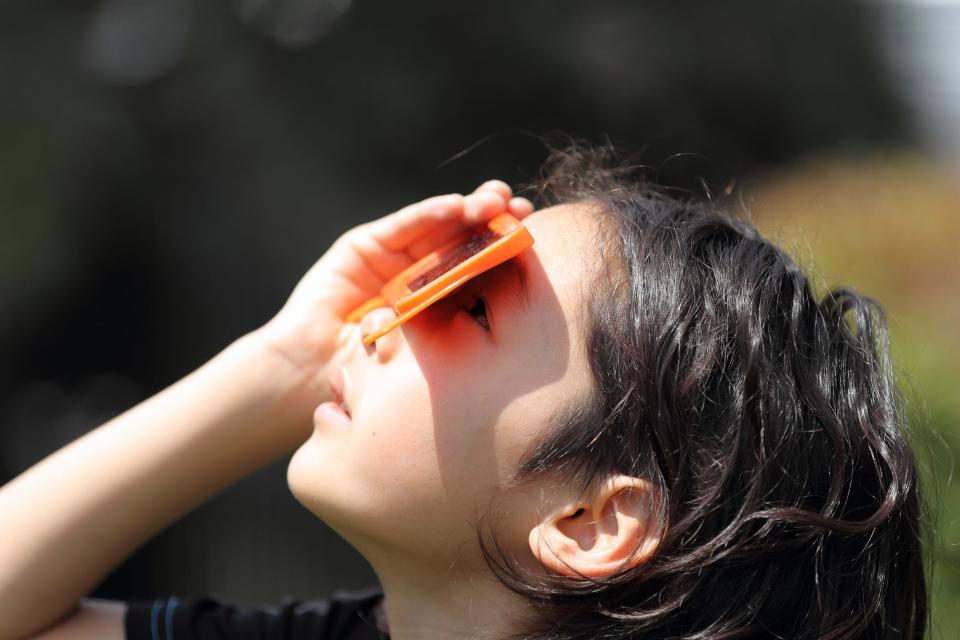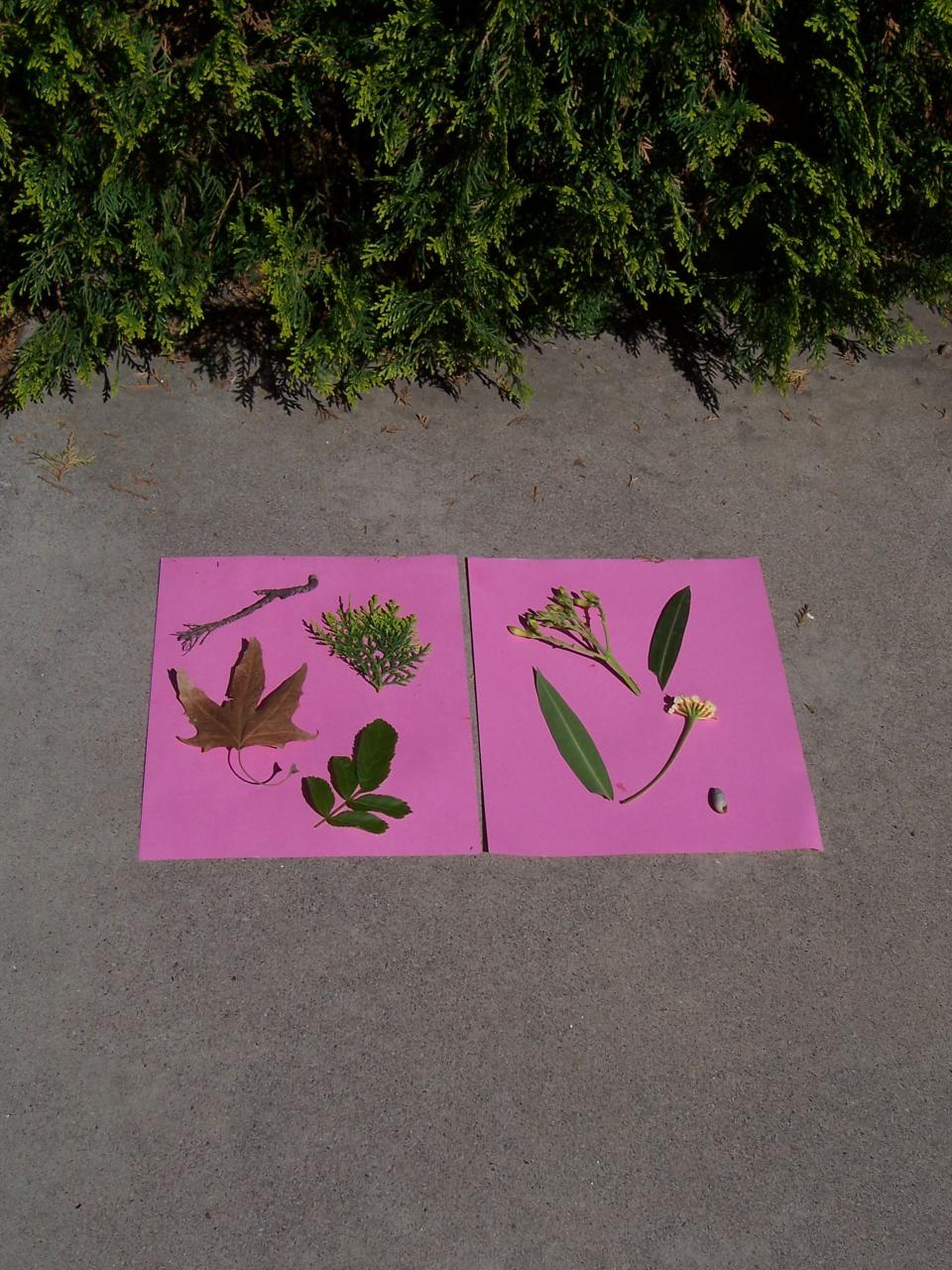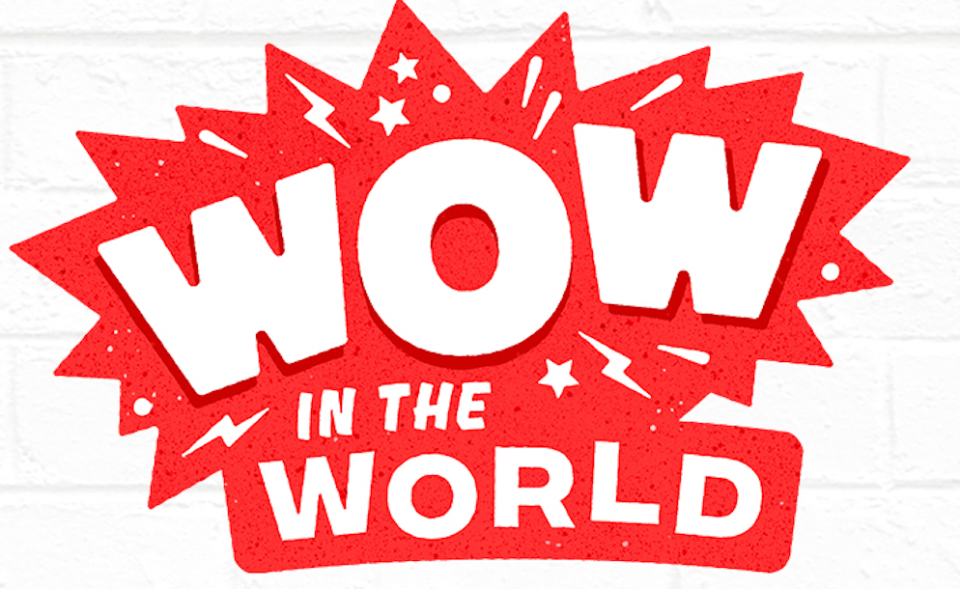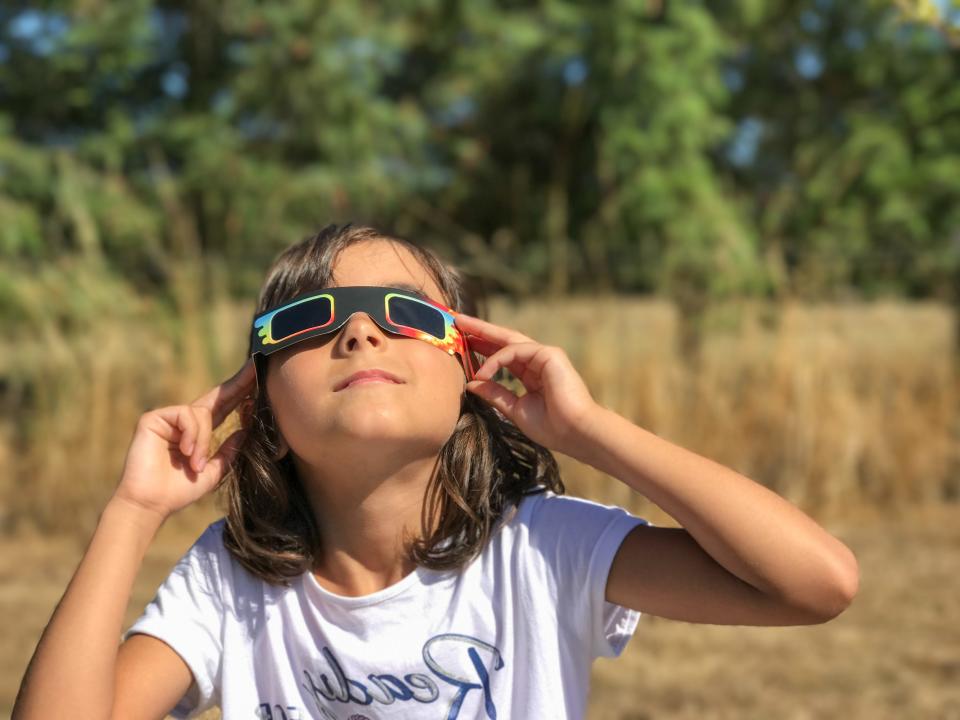Solar eclipse fun for kids: Activities, crafts, podcast parties and more
Some lucky children will be able to catch a total solar eclipse April 8 alongside their parents in an incredible event that will not present itself again until 2044.
Families in 13 states – Texas, Oklahoma, Arkansas, Missouri, Illinois, Kentucky, Indiana, Ohio, Pennsylvania, New York, Vermont New Hampshire and Maine, according to NASA – will have the opportunity to experience the moment when the moon completely blocks the sun. Families in parts of Tennessee and Michigan may also experience its full effect.

With many schools closing across the U.S. on the day of the eclipse, parents are left looking for ways to keep their kids busy and how to make the day fun.
We've gathered some stellar leads, but first, a little on how to talk to kids about what to expect.
Solar eclipse video for kids
Michelle Nichols, director of public observing at the Adler Planetarium in Chicago, shares an easy way to explain the event to kids.
“At its very simplest, when the moon gets in between the earth and the sun, and the moon appears to pass over the sun as seen from Earth, then we get a solar eclipse,” Nichols told Scientific American.
“If the moon partially covers the sun, we call it a partial solar eclipse. If it completely covers the sun, we call it a total solar eclipse.”
Other information that may be fun for older kids to digest would be how the solar eclipse phenomenon differs from the new moon, Jackie Faherty, an astrophysicist and senior education manager at the American Museum of Natural History in New York City, told Scientific American.
The two are similar, yes, but the moon's orbit around Earth "is not completely lined up with our planet’s orbit around the sun," Faherty said. It is actually tilted by about 5 degrees, so "when the moon moves between Earth and the sun, the three bodies are out of alignment."
"The moon doesn’t block the sun, and the shadow of the moon cast by the sun lands in space instead of on Earth’s surface."
Solar eclipse guide, coloring pages for kids
USA TODAY has a special graphic eclipse kids' guide to help children (and adults) better understand what happens during a solar eclipse. It also includes information on eclipse glasses and viewing safety, plus some fun coloring pages to download and print. They should keep kids (and adults) busy while waiting for the eclipse to arrive!
Solar eclipse activities for kids
There were some creative ideas that surfaced during the 2017 solar eclipse that more families are trying out this time around. Here are some of the best.
Make a pinhole viewer
The Boy Scouts of America have an idea for how to get kids excited about the eclipse. Why not personalize a viewing box for the event?
You will need:
A small box with a lid
A small piece of aluminum foil
A small sheet of white paper
A utility knife or hobby knife
Tape
A needle or sharpened pencil
Some art supplies to decorate your box
For instructions on how to make the pinhole viewer, visit Scout Life Magazine. USA TODAY has also gathered more ideas for making DIY eclipse viewers at home.
Create sun prints

Scholastic has a fun art project kids can engage in ahead of the eclipse.
"Human eyes can’t see ultraviolet light, but using construction paper, kids can create sun prints to see for themselves how the sun’s powerful UV rays break down dyes and bleach paper," Scholastic shares.
You will need:
Colorful construction paper
Clear plastic wrap, or a large piece of plexiglass
Leaves, flowers or other flat items
Small rocks to use as weights
For instructions on how to create your sun print, visit Scholastic's blog.
Recreate a solar eclipse at home
A fun way to keep your kids busy and also increase their understanding around how a solar eclipse works is by creating your own eclipse at home.
Multiple parenting blogs suggest using an inflatable Earth, tennis ball (or ball of a similar size) and a flashlight to experience an in-home solar eclipse.
Follow NASA's interactive map
Know the exact time the eclipse will pass over you by tracking it using NASA's eclipse map.
You will be able to see when the eclipse begins, when it will get to you and how much of the sun will be covered during the event.
'Wow in the World': The Great Solar Eclipse Party Podcast

Another way to celebrate the event is with a fun podcast episode for the entire family to enjoy. The "Wow in the World" special eclipse episode will be available April 1 on the Wondery app and wherever you get your podcasts.
In the episode, “The Great Solar Eclipse Party,” hosts Mindy Thomas and Guy Raz plan an eclipse celebration for their special friends. They explore the basic physics behind the event and discuss ways to stay safe while observing it. The party ends with a song called "Eclipse Party" by a kid band called Moon 5.
"Wow in the World" is a the No. 1 science podcast for kids and their grown-ups, according to the show.
Solar eclipse glasses: Everything you need to know, including where to get them
Kids eclipse glasses

Amazon has plenty of options for solar eclipse glasses for kids. Including some really cool plastic pairs that look more like sunglasses and come in fun colors.
My Science Shop has wraparound solar glasses for smaller heads at risk of having them fall off, and Lunt Solar Systems has a really creative paper pack of four glasses for kids to enjoy.
This article originally appeared on USA TODAY: Solar eclipse activities for kids: Videos, DIY viewers and more

